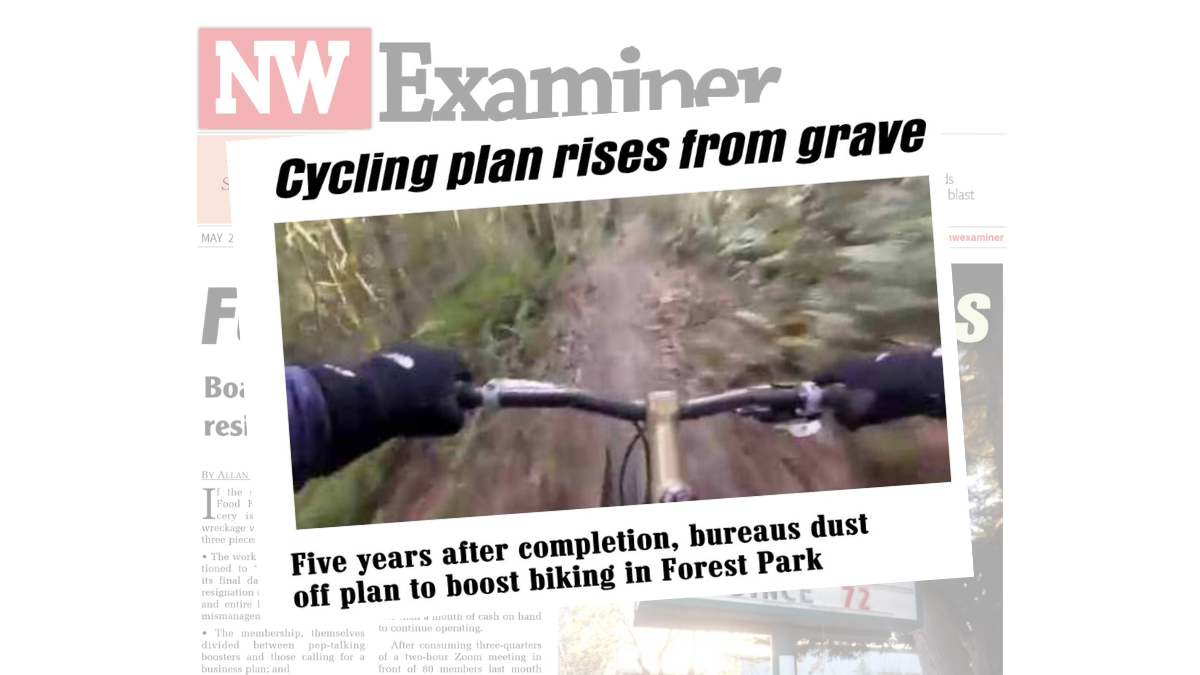
At the start of each Portland Bureau of Transportation Bicycle Advisory Committee meeting, members share general updates and concerns. At the meeting last night, one of the members shared how he had just read an article about the Off Road Cycling Master Plan in the NW Examiner and was worried about what he learned. “The article was about the plan to make trails which are now used by hikers, also open to cyclists… It pointed out that when they did a survey in 2017, 80% of the people opposed this plan. It is a very important issue of concern,” the BAC member shared.
The thing is, the article is very misleading. And unfortunately it’s just the latest example of an ongoing smear campaign. I wouldn’t even mention it here if not for it coming up at the BAC meeting last night and my concerns that NW Examiner Publisher Allan Classen’s work continues to muddy the waters of this very important issue.
It’s clear that as new people cycle into local bike advocacy roles, they might not be aware of Classen’s history. Consider this post another attempt to try and set the record straight.
To refresh, Classen has done admirable work keeping his neighborhood newspaper alive and he is capable of good journalism. But with the issue of cycling, he seems to completely disregard ethics in favor of pushing a specific, anti-cyclist narrative. This is the same person who in 2010 called people who ride in Forest Park “bicycle zealots” in an unhinged op-ed that likened cycling to a religion. That was just one of several efforts over the years where he has crossed the line and made his disdain for cycling and the people who do it crystal clear. And he hasn’t limited it to opinion pieces. He’s referred to the local nonprofit NW Trail Alliance as a “militant” group, coordinated with opponents of cycling in the park for a 2013 story that alleged “illegal cycling” in Forest Park and equated tire tracks in the mud to vandalism, and has repeated a false claim that the ecological health of the park and bicycling are at odds with each other (not only is that untrue but the plan makes it clear that any change to cycling access in the park must have a “net ecological benefit”).
Classen’s latest story completely misrepresents the Off Road Cycling Master Plan, which was officially adopted back in March after languishing in “draft” form since 2018.
Classen takes part in revisionist history about the plan and how the plan came together and in so doing he throws the many hard-working advocates and policymakers who created it under the bus. I’m not here to defend the plan or the process it took to create it, but it should be represented with accuracy.
I’m not aware of the survey he refers to where people were overwhelmingly opposed cycling in the park, but I’m not surprised by that number. It would all depend on how the question was asked. It’s easy to understand how people would respond negatively if the question was framed poorly — especially given how Classen and others in opposition to cycling in the park have spent years misrepresenting the issue.
The article also calls the adoption of the plan a “back room deal.” That’s a stretch given that there were two full years of committee meetings, open houses, and comment periods. This idea that off-road cycling advocates wield great power and influence at City Hall is a common refrain from Classen. But it’s more projection than anything else given the many well-connected, veteran activists who’ve fought cycling in Forest Park for many years — many of whom just so happen to live adjacent to it. The fact that the plan sat on a shelf gathering dust as a non-binding “draft” for six years and we’ve made almost zero progress for cycling in Forest Park in the last two decades shows you were the power truly lies on this issue.
The largest gripe I have with Classen’s latest is the main falsehood he continues to push: that the plan will convert existing hiking trails into shared trails open to bikes. “They’re coming for Wildwood!” (to paraphrase) is what he and others want you to think. But that is not on the table and the plan explicitly says so. Despite that fact, Classen includes a map graphic (at right) with the caption: “Pink lines denote expansion of bike access to trails now limited to pedestrians.” But there’s nothing in that map or the plan itself that says that. This fear-mongering has been a staple of the attack plan from anti-bike voices around this issue for over a decade now and it’s a huge disservice to our city.
To be clear: What bicycling advocates have always wanted is to simply make it easier and more fun to ride bikes in the park. That could take many forms: existing fire roads could be re-aligned to provide a more fun experience; new trails could be built using responsible, modern trail-building methods (of which many of the existing hiking trails in the park don’t adhere to), and so on. And they want to donate thousands of volunteer hours to preserve it and help it sustain a more diverse base of users.
Regardless of what ultimately happens, I have full faith and confidence in NW Trail Alliance. They would be more than capable stewards in the park. That’s clear given the many productive and successful partnerships they already have with agencies like the Bureau of Land Management, Oregon State Parks, Metro, Portland Parks & Recreation, and others. And unlike NW Examiner, they have a long and successful track record of leading — not misleading — our community.



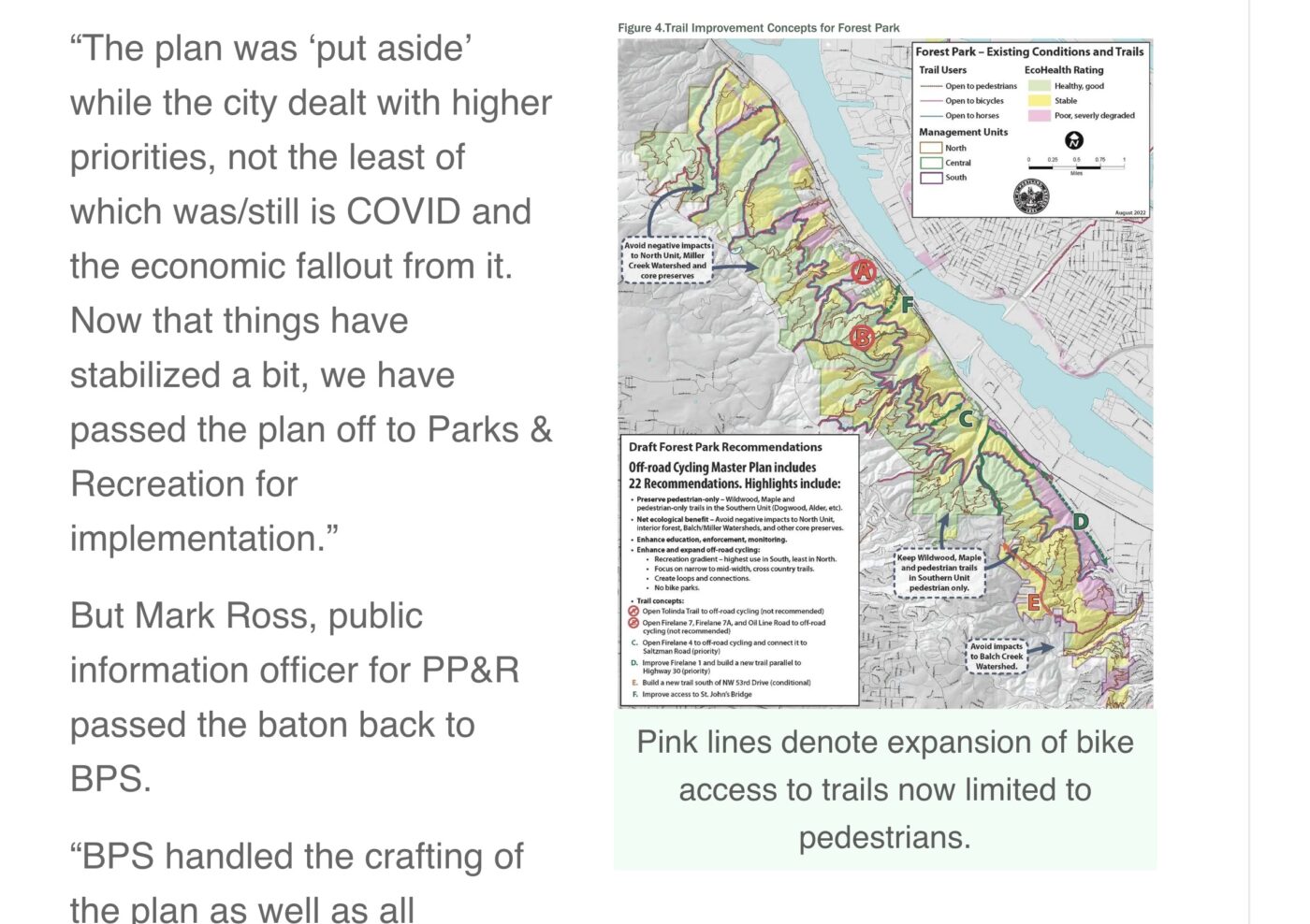
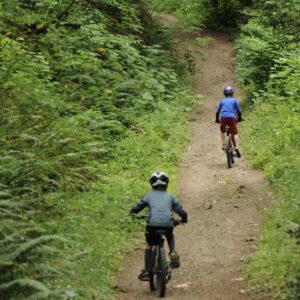
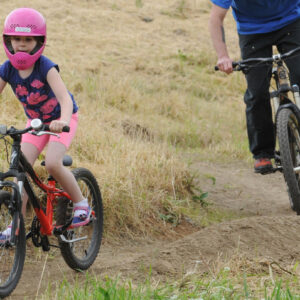
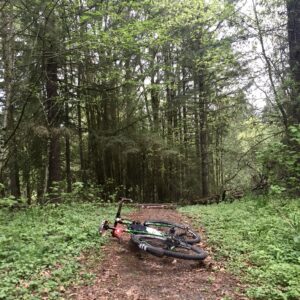
Thanks for reading.
BikePortland has served this community with independent community journalism since 2005. We rely on subscriptions from readers like you to survive. Your financial support is vital in keeping this valuable resource alive and well.
Please subscribe today to strengthen and expand our work.
In regard to the map in the examiner article with the ‘pink lines’ you stopped short of explaining what they actually are, which is trails that currently allow bike access. That’s why their characterization as conversions or expansions is incorrect.
Unfortunate. Have any non judgmental friendly cyclists reached out to Mr Classen and attempted to have a conversation?
i’ve talked to him on the phone before and said hi at a few events over the years. but as always with situations like this, the purpose is to address something he has already put out into the public record because that’s where i believe the harm has been done. how he justifies his actions is not as important because they’ve already happened.
Follow-up question: Did you attempt to reach Mr. Classen for comment before publishing this story?
nope.
I’m very orthodox about my bicycling zealotry.
So who is this “Classen”? The name is used in the article without any background info.
sorry. that was an editing issue. I’ve added it. Allan Classen is publisher of NW Examiner and author of this and most of its articles.
Is there a reason not to name the BAC member?
Getting out one of my favorite dead horses to beat here, but this sort of crazy needs a real response. Go and actually show what urban mountain biking in Forest Park would be like. Show (in great detail) why Allan Classen, Marcy Houle, etc. are so very wrong – and show how they are actively lying about things.
yeah I just didn’t want to put him on blast or anything. It was a pretty innocent oversight to make as the person is just newer to advocacy and didn’t know the history of Forest Park and Classen. I don’t want to bring any heat to them. Happy to tell you privately if u email me.
I sort of figured that after I put in the comment. There might be people who don’t know that when it comes to cycling Mr. Classen takes his editorial cues from Der Sturmer.
Hear, hear.
In so many issues, older, more conservative voters are holding us back. In the case of mtb riding and housing both, the NIMBY coalition has worked to delay a green benefit, in favor of a more carbon intensive status quo.
It’s a shame.
LOL. A “conservative voter” in Portland? That’s like finding a spotted unicorn.
If you subscribe to the myopic/cable news definition of “conservative”, which is basically synonymous with “Republican”, sure.
A broader/more original definition meaning “to conserve, i.e. resist change”, on the other hand? Portland has many of these conservatives, very much including Classen and the folks he writes for. Regardless of whether they vote D up and down every ballot.
He said “more conservative.”
People don’t want to hear this but Forest Park needs to be managed more like a park and less like a forest. We shouldn’t repurpose trails or fire roads, we should build new trails.
I spend a lot of time in FP and it’s turning straight up into a massive tinder box. The natural antidote to its disease would be a small fire, but it’s far too close to buildings to allow that to happen. It needs thinning and building trails is one way to do that.
well said! Some people talk about FP like it is some backcountry ecological paradise that needs protection. It is a beautiful resource, but recreation can and should be a tool to enhance the ecological health. Tree thinning, ivy and invasive species removal and select planting could be a part of rebuilding and greatly expanding the trail system. There are some nesting areas that should be protected, but that would be a seasonal closure of short trail section likely in the March-July timeframe. If we really want to develop the ecosystem, we need a good management plan that incorporates well-designed trails with contiguous openspaces and the ability to seasonally close trail segments along with a planting and maintenance plan. Calling a bunch of dense second-growth Fir with a an Ivy understory a pristine ecological treasure is laughable. Also, Cars and cats do a magnitude more damage to ecosystem health than hikers and bikers, even if they bring their dogs!
I totally agree with you, but this will never happen under the current ORCMP. In fact, I think ORCMP basically put in enough red tape and vague language to stop adding any more mountain bike access at all. The only way to start impacting change there is by actually doing something (i.e. riding the current trails, raking in new trails).
Unfortunately, people and groups like Classen, Houle (and her gang), FP Conservancy, and the Audubon society have a vision that will basically never let any more access. There is enough arguing and nitpicking to hang up any progress for decades, regardless of what the majority of the people want. On top of that, I really do think that FP is being mismanaged, as you said. The greenwashing, NIMBYism, and straight up lying around this issue is astounding. My hopes are not high about access any time soon.
Good job on a well written piece, JM.
The thought of untouched wilderness, that you can hike through especially so close to and surrounded by development, is a very alien way to think to me. We cannot use a space and have it remain untouched. Responsible Stewardship of our spaces is the way. From years of attending like minded courses made by hikers, backpackers, rock climbers, and other sorts of outdoors enthusiasts myself, I would highly recommend Mr Classen attempts to spend a day with the NWTA’s Trail Sustainability Institute, they have it every month or so. I can very confidently say they are very in line with current best practices for responsible and sustainable use, development and maintenance. And oh so very far from being anything militant, but having played as and with many an Orc in my LARPing days, being misclassified as militant is not so alien to me. Surely it must be the downhill chest plate armor, full face helmets with chrome goggles and those camo patterned beer cans just released in support of the NWTA that are confusing him.
Correction; I have noticed the cans are topographic and not camo at all. Very similar green to the untrained eye (mine)
It’s about keeping people out of the back yard of the elite, and we’re never going to get a wheel in the door.
We have peds, bikes, and cars. This article should be rewritten. It diminishes the credibility of the platform, and bike advocates.
Well put
I completely agree with the NW Examiner. It’s been my experience that the bicycle riders in Forest Park are reckless and dangerous, I’ve had too many close calls from bikers coming downhill at too fast a speed, almost hitting me. They’ll ride anywhere and do anything believe it as it’s happening and the article is correct.
The question is, of course, what if we can have our cake and eat it too? What if the problem you highlighted with current riding in Forest Park are the result of Parks unwillingness to learn from others as well as the meddling of anti-mountain bikers like Mr. Classen? And what if the problem goes away by employing best practices and stop listening to the antis, like Mr. Classen?
Here is the thing: a lot of cities do urban mountain biking and do it well. It’s in every imaginable scenario from the island of Manhattan in New York City to Anchorage, AK. They manage to do this without piles of injured or dead hikers lining the trail. Heck, the place I regularly point out as the template for Portland has 103 miles (!) of shared trails in town and has never had any injurys associated with mountain bikes being on the same trail as hikers.
You make an excellent point, Cyclekrieg. Bike trails need to be *different* from hiking trails – they need different sightlines, for instance, because people walking on cycling trails need to be able to see bikes coming at them (and behind them) at faster speeds.
I was once almost hit by a guy on a bike while I was hiking on one of the trails that circles Hagg Lake. I was on a stretch of trail that led uphill to a blind crest, so I could not see the cyclist barreling toward me, and he could not see me. Such a trail should not allow cycling, in my opinion, due to inherent danger to walkers and other cyclists. So if there are trails like this in FP, bicyclists should not be using them, but there could be trails designed specifically for bikes that have the right sightlines.
Boy, I’m about to ruin your day. 🙂 So no, you don’t design a trail for separate users. You design the trail for all the users on the trail at the same time.
As you note, different users have different needs and different design choices do different things to the user’s experience. If you have shared trail that is not directional, you have to assume worst case scenario, the mountain bike approaching a hiker from behind (have bells on your bikes people, seriously). And some of those choices can counter-intuitive. As an example, if you want to slow mountain bikers down, you add more curves (weave around more things), vary the bench width (chokepoints, etc.) and SHORTEN the sight lines. Talk to hikers and they will say that because of mountain bikes, they want wide trails with LONGER sightlines. But that would do the opposite of what they want because wide and open trails feel more comfortable to go fast on when you are biking.
Cycling has been so mismanaged in FP that it results in a ton of issues. The trails are not conducive to sharing and they are horribly built. Fortunately for Mark, there are many more miles of trails where bikes aren’t allowed and generally don’t ride that he could easily stick to those sections if he is so worried about being hit.
Now do off-leash dogs.
Counterpoint – the hikers/runners in FP tend to be completely unaware of their surroundings, have their dogs off-leash the majority of the time, and really don’t know proper etiquette about how to share the trail and the park. They go everywhere, don’t clean up after their dogs, and the vast majority drive to the park adding to neighborhood problems and pollution.
Almost like if Portland had a cycling group build a well thought out cycling destination within FP they might be more likely to stay off the hiking trails. Wild idea.
I’ve been reading the Examiner for years and I generally support Allan Classen’s work b/c he does shine a light (as he says) on many important issues, such as the dysfunction in city hall that hurts all of us. But he sure does seem to have a thing about bikes! I can’t think of a single article that highlighted anything good about bikes – indeed every article I’ve ever read about bikes in the Examiner takes some issue with them. For example, I remember Classen being up in arms about a diverter that was installed to help bikes.
What’s weird to me about Classen’s stance is that someone who wants to get around NW Portland and connect with people at street level could do no better than ride a bike! NW Portland could be a kind of cycling paradise if people like Classen would advocate for cycling there, but he seems intent on preserving the status quo. We should invite him to go for a ride with us and see how great it is to get around by bike in NW Portland. Yes, the hills are brutal but that flat area east of 23rd is easy riding.
I feel part of the problem with the Examiner is it blends both news and editorial content in the same piece. It’s an unfortunate and missed opportunity too, biking should de a natural ally to their mission. However, I see the same failings here with regards to autonomous cars. Specifically on the Monday round up headline comments vs. the actual story. When we let the data tell the story it’s easier to find our shared path forward.
Another inaccurate comment is his assumption that “Expanded cycling access to the park has never been popular with the public.” In fact, the single track advisory committee and metro showed that expanded access was favored by the public.
I also find it funny that he interviews the “Chair of Coalition to Preserve Forest Park”, which from what I can tell is a facebook group that hasn’t been active since 2020 and is pretty much just and anti-mountain bike group. They have even let their dns entry lapse. I didn’t see any counterpoint from the supporting groups. I get this is an editorial, but this is just such a complete joke that just seems to further polarize people and stoke fear, uncertainty, doubt, and disinformation.
I have also been having a hard time finding the numbers quoted in the article – 79% were against adding more cycling access, for example. Anyone have the results of those surveys handy?
I agree. I think most people understand that it’s not productive to do a near-total ban, and much more logical–especially if you don’t like sharing trails with mountain bikers–to set aside a tiny portion of the huge park so people have a place to bike. That view would get a lot of support if presented objectively and fairly.
The problem with creating new trails, for either hiking or biking, Jonathan is more threat to wildlife, which is why we hardly ever see any in Forest Park these days to begin with. The park is not just a human playground. It’s supposed to be a wilderness preserve, integral to a wildlife corridor between Portland and the Coast. More humans removing native vegetation for trails, more human presence and activity, faster human activity and more human noise scares wildlife away and reverses the preservation effort.
This is what happened to Coyote Wall in the Gorge. That name was first of all appended to it by cycling enthusiasts, in homage to Moab cycling. Before that it was just a syncline, part of Burdoin Mountain. After the ranching ended there as well as on the Catherine Creek complex, various mammal and bird populations came back. But when cycling and more hiking and trail building ensued there, they disappeared again.
We humans have a long way to go before we fully respect nature for what it is rather than perceiving it as merely a commodity to exploit for business and recreation. Not that we shouldn’t enjoy nature and play in it. But too many humans consuming too many resources and cutting too much into nature with minimal regard for its inherent values, is what has grown out of control and what a few are attempting to check at least a little.
I realize that this is a year-old article that I just found and perhaps nobody is going to see my comments, but one more thought I would like to add is that I am not understanding the argument that basically says Forest Park has already been degraded from serving as a wilderness preserve, so let’s just convert it all the way into a theme park.
Is this our attitude towards our planet as a whole? We’ve already spewed too much carbon into the atmosphere, denuded most of our forests, depleted most of the oceans’ fisheries, sent into extinction too many species’, dumped too much pollution everywhere, so let’s just party? Fortunately, not.
So how about a little think global, act local here? Where else in the Portland metro area do we have a wilderness park? How many cities anywhere have such a treasure within their limits? Why should we not be making preserving it our highest priority? How about a little “think not what the city can do for you, but what you can do for the city?”
Scott, we hand approve all comments, which means either JM or I read each comment before publishing it. So I’m reading your comments. Also, we have a window at the bottom of the front page which posts the first couple of lines of each new comment (the most recent four, I think). Some readers check that, I know.